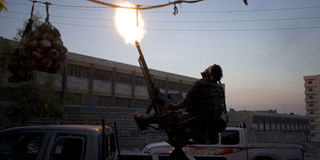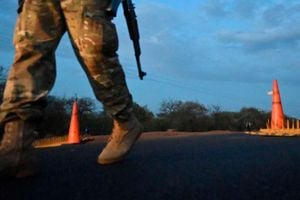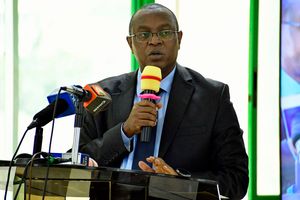
A Syrian rebel fires an anti-aircraft heavy machine gun at an army MiG-23 conducting raids on the Saif al-Dawla neighbourhood of Aleppo on September 19, 2012. Syrian troops backed by helicopter gunships clashed with rebels near a barracks in Aleppo on September 21 as battles broke out around a military airport elsewhere in the northern province, monitors said.
The resurgence of fighting in Syria has brought into focus the role of foreign powers in the country. Turkey, Iran, Russia and the United States have all deployed troops in Syria since 2011, while Israel mounts frequent airstrikes in Syrian territory.
Here is some background on the foreign armies in Syria.
Turkey
Turkey has deployed troops across northwestern Syria - territory held by Syrian rebel groups which rose up against President Bashar al-Assad in 2011. Turkey, which firmly supported the 2011 uprising, backs some of these rebel groups.
One of Turkey's main goals has been to weaken Syrian Kurdish armed groups which carved out autonomous enclaves along the Turkish border during the civil war. Ankara views the Syrian Kurdish groups an extension of the Kurdish Workers' Party (PKK), which has been waging an insurgency in Turkey since 1984.
Ankara deems the PKK a terrorist group.
Another pressing Turkish concern is securing a return home for some of 3 million Syrians who have fled to Turkey during the war, many of whom came from the Aleppo region.
Turkey has mounted four operations in Syria since 2016.
Its first targeted both the jihadist Islamic State group and the Syrian Kurdish YPG, a Syrian Kurdish faction and the spearhead of another military grouping, the Syrian Democratic Forces (SDF).
Turkey's presence expanded in 2017 when it struck a deal with Russia and Iran that resulted in Turkish forces deploying at 12 positions in the rebel-held northwestern Idlib region.
This was followed in 2018 by an offensive targeting SDF-controlled Afrin, and another incursion in 2019 into SDF territory between the border towns of Ras al Ain and Tel Abyad.
The following year Turkey poured thousands of troops into the Idlib region to stem an offensive by Russia-backed Syrian government forces targeting rebels.
Damascus views Turkey as an occupying power.
Russia
Russia intervened militarily on Assad's side in 2015, in its biggest foray in the Middle East since the Soviet Union's collapse. Operating from an airbase in Latakia province, Russian air power decisively tilted the conflict Assad's way.
Coordinated with Iran, the deployment expanded a Russian military presence dating to the Cold War, when the Soviet Union established a naval base at the Syrian Mediterranean port of Tartus.
Russian forces have also had a presence on the ground in government-held areas, with Russian military police deploying during attempts to de-escalate fighting.
Russia is continuing to support Assad, the Kremlin has said.
Iran and allies
Iran deployed its Revolutionary Guards to Syria as early as 2012 to help Assad. Lebanon's Hezbollah, which is backed by Iran, played a big part.
For Iran, Assad is a crucial ally, part of its "Axis of Resistance" to Israel and U.S. influence in the Middle East.
Tehran's ties to Damascus have allowed Iran to spread its influence through a land corridor from its western border via Iraq all the way to Lebanon.
Iranian Foreign Minister Abbas Araqchi said in an Arabic-language interview on Dec. 3 that Tehran would consider sending troops to Syria if Damascus asked.
Tehran has always described Iranian forces as playing an advisory role at the Damascus government's invitation.
Alongside Iranians and Lebanon's Hezbollah, other Shi'ite Islamist groups backed by Tehran have played a vital combat role. They have included groups from Afghanistan and Iraq.
Hezbollah pulled fighters from Syria back to Lebanon as its war with Israel intensified from mid-October, Reuters has reported. While a ceasefire was reached last week, Hezbollah does not currently intend to send fighters to northern Syria to support the Syrian army, Reuters reported.
The presence of Iranian and Iran-backed forces in Syria has been a big point of concern for Israel, prompting it to carry out frequent airstrikes in Syria.
USA
The U.S. military intervention in Syria began in 2014 with air strikes against the Islamic State jihadist group that had declared its rule over a third of Syria and Iraq.
An initially small contingent of U.S. special forces deployed to Syria, working with the SDF, fighting to drive Islamic State from areas it had captured in Syria's north and east.
Declaring the battle with Islamic State almost won, Trump announced in 2018 he wanted to pull out U.S. troops.
But the plan was softened within a year after facing criticism for leaving a void that Iran and Russia would fill.
U.S. forces remain in Syria and continue to support the SDF.
U.S. military positions and personnel in northeastern Syria remain essential to ensuring Islamic State can never resurge, U.S. Ambassador Robert Wood told the Security Council on Dec. 3.
U.S. troops are also stationed at Syria's Tanf garrison near the intersection of the borders of Jordan and Iraq, where they support a Syrian rebel force to counter Islamic State in the area.
Assad's government views the U.S. forces as occupiers.
About 900 US troops are currently in the country, mostly in the northeast.










